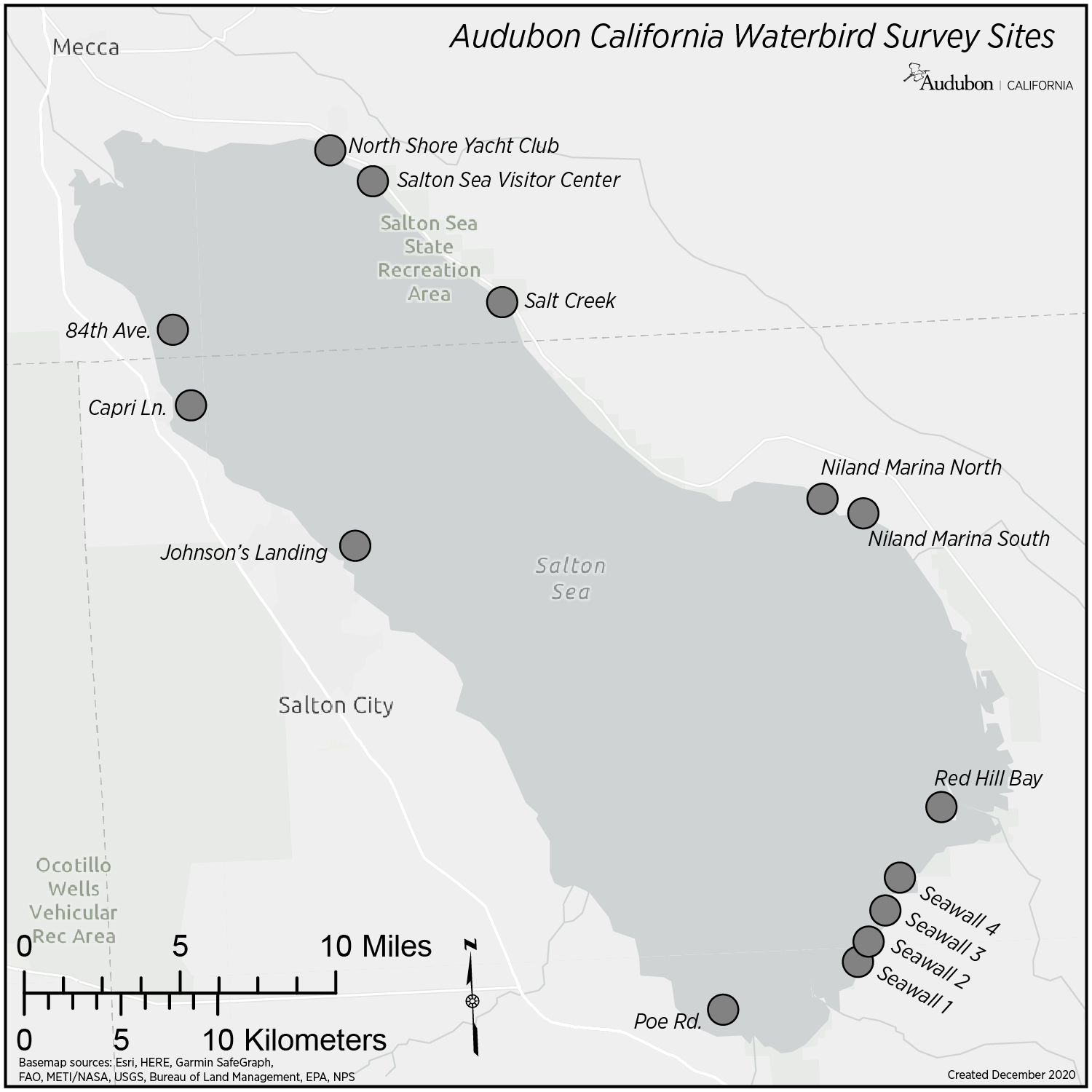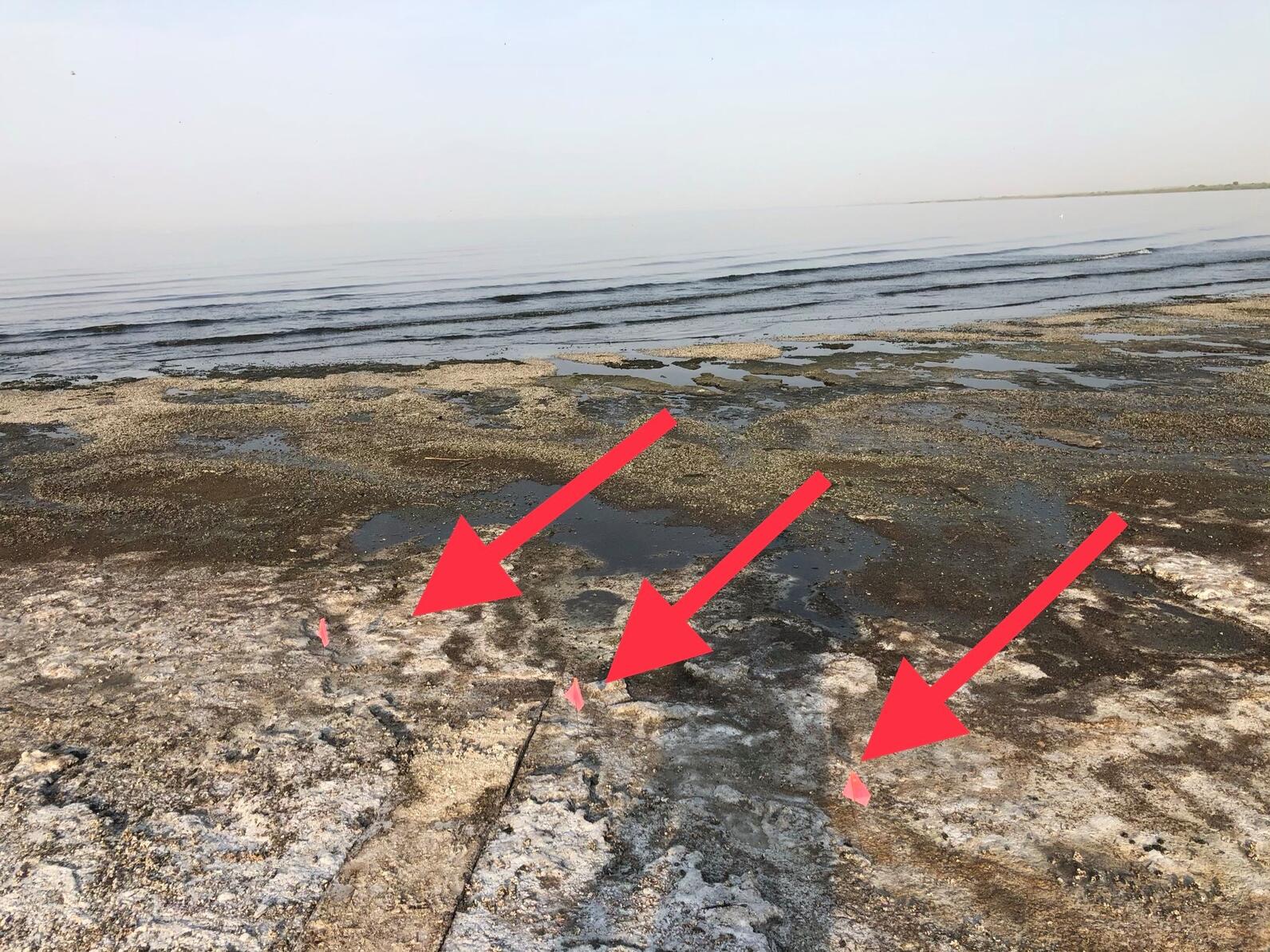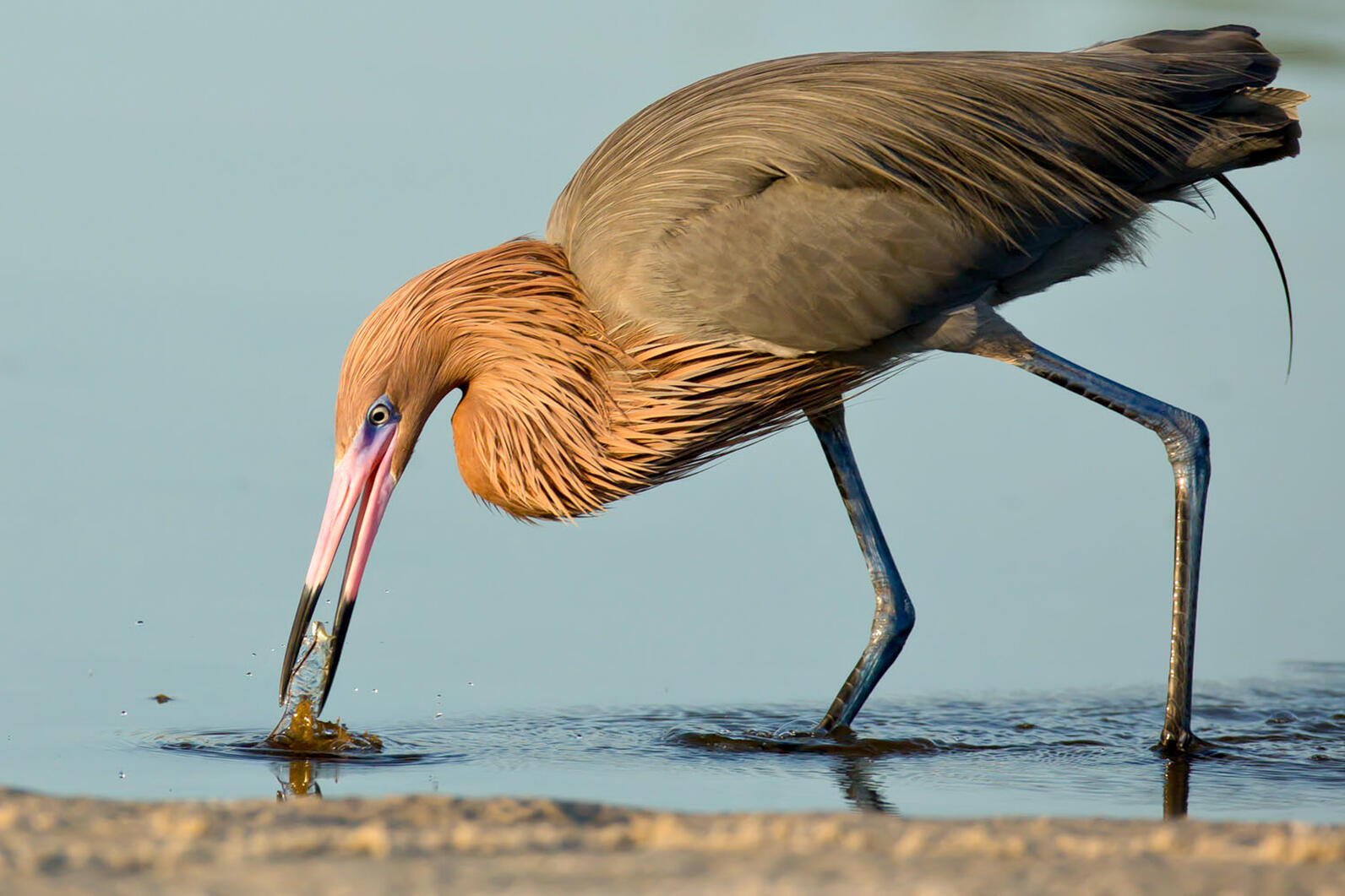Versión en español aquí.

As 2020 grinds to a welcome close, Audubon’s year-end surveys are showing it’s been a year of contrasts at the Salton Sea. While some birds are are still visiting by the thousands, others are nowhere close to population levels of previous years.
Through August, September, and October of 2020, our surveys counted a total of 69 bird species and 26,000 individual birds across 14 points located around the Salton Sea shoreline. For that reason, most of species and individuals represented do not include passerine birds – that is, songbirds such as sparrows, warblers, finches, and woodpeckers. Instead, our surveys focus on shorebirds, waterfowl, wading birds, and seabirds. Here are a couple of bird trends we noticed within that timeframe of just three months, compared to last year’s data.
At our 84th Ave. point, in October 2020 we had a higher species diversity than October of 2019. We had a total of 19 species and 985 individuals observed here this year compared to six species and a total of 569 individuals in October of last year. About 300 of the birds counted there this year were cliff swallows flying along the shoreline, an astonishing sight to see. Half of the species diversity this year consisted of shorebirds including sandpipers, godwits, plovers, and of course, our beloved Black-necked Stilt. As our 2019 Conservation Report states, as the Salton Sea shoreline recedes, conditions can be better suited for shorebirds and less suited for waterbirds like pelicans, grebes, and cormorants. In fact, during September and October of 2020, we counted only 133 American White Pelicans, 29 Neotropic Cormorants, and 30 Double Crested Cormorants across all Salton Sea count points. More than 12,000 of the 26,000 individual birds counted in these last three months have been shorebirds, comprising over 50 percent of the bird population in this 3-month span.
Our Poe Road count point tends to be a high density shorebird area. There, thousands of waterfowl and shorebirds, specifically Northern Shovelers and Least Sandpipers, are paying us a visit this year! Last October, we spotted only 140 Northern Shovelers and 140 sandpiper individuals of various species at this point, compared to the 400 and 1000 respectively that we saw this October -- and the more than 3,000 Northern Shovelers and 3000 sandpipers we spotted just a few weeks ago in November. In addition, the Point Blue Shorebird Survey in November noted Shovelers, peeps and hundreds of Snowy, Semipalmated and Black-bellied Plovers and Kildeers. Last year we counted fewer than 100 plovers between the months of September and November.

One of our count points has changed little over the past few months and years, with low species diversity and counted individuals. At Johnson’s Landing, the highest number of bird species we’ve found is 12. Over August, September and October, only five species and 385 individual birds have been counted compared to 11 species and 103 individual birds from last year. Although more individual birds were counted this year, 350 of them were Northern Shovelers that we logged in August 2020, which was very unexpected. This Johnson’s Landing was once considered a good birding spot, with eBird records recording a high of 75 species bird count back in 1990. It’s still unclear what led to Johnson’s Landing’s decline, but climate change and a receding shoreline are definitely contributing factors. In the summer of 2020, Salton Sea Audubon staff measured shoreline retreat during monthly microinvertebrate surveys. They revealed that the shoreline is currently receding some 40 to 60 feet every month, according to Salton Sea Director Frank Ruiz.

Although some things are predictable at Salton Sea, such as minimal birds at Johnson’s Landing, we occasionally also have a couple of unexpected guests. In the October 2020 survey, we spotted a Reddish Egret dancing around the shoreline at our Desert Shores Marina point. The Reddish Egret is a wading bird commonly found in the Caribbean year-round. While it does visit Southern California and Baja California coasts in winter, it normally is not found at the Salton Sea. Less shocking to find -- but still a rarity -- is the Solitary Sandpiper. A single Solitary Sandpiper was spotted on the Poe Road point back in our September survey. According to eBird, there have been only 13-recorded observations at the Salton Sea, quick stops before continuing their migration to Central and South America.
Detailed results from the 2020 and 2019 year will be available in our next Audubon Conservation Report, coming out within the next couple of months. Our previous report, from April 2019, is available here.






